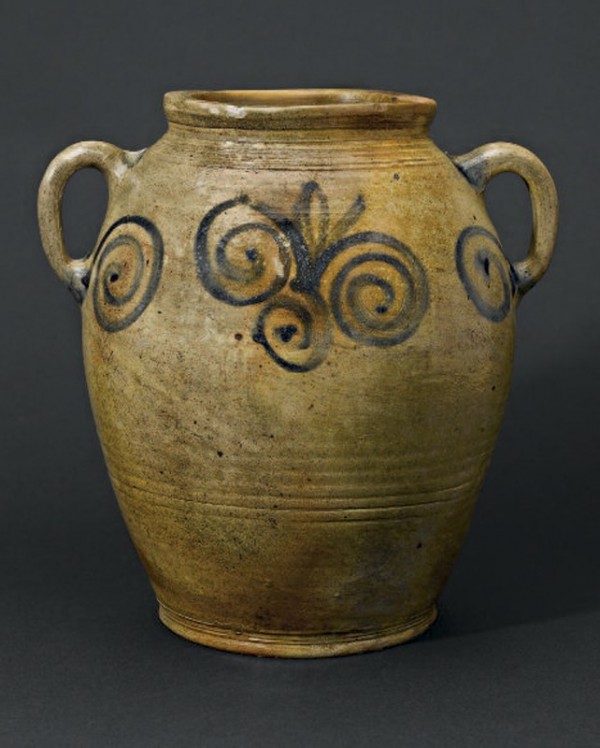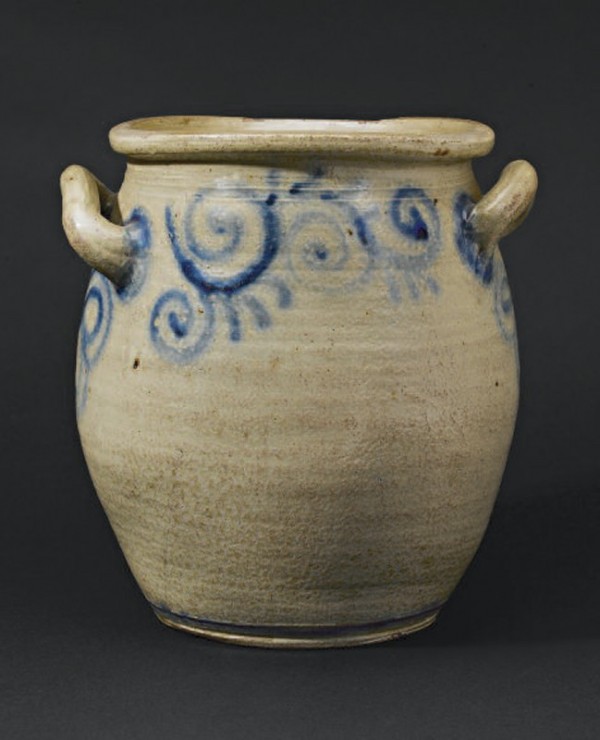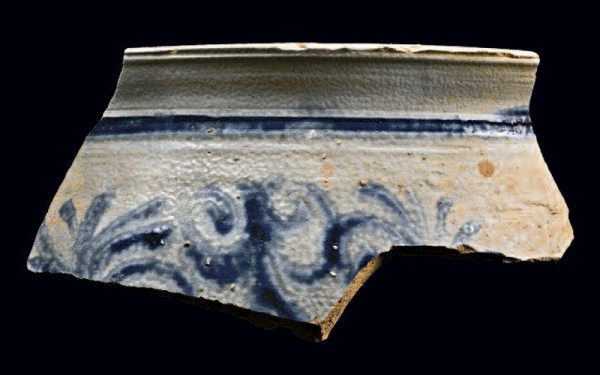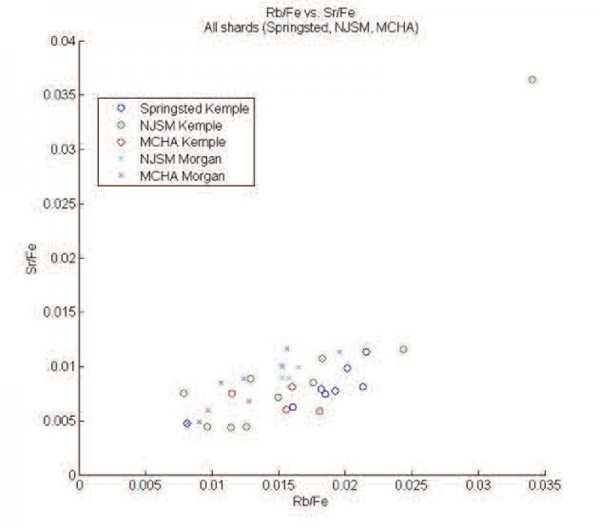
Jar, attributed to Morgan pottery, Cheesequake, New Jersey, 1775–1784. Salt-glazed stoneware. H. 12 1/4". (Private collection; photo, Gavin Ashworth.)

Jar, Kemple pottery, Ringoes, Hunterdon County, New Jersey, ca. 1746–1790s. Salt-glazed stoneware. H. 11". (Courtesy, Monmouth County Historical Association, Gift of Mrs. J. Amory Haskell; photo, Gavin Ashworth.)

Jar fragment, Morgan pottery, Cheesequake, New Jersey, 1775–1784. Salt-glazed stoneware. (Courtesy, Robert J. Sim Collection, MCHA; photo, Gavin Ashworth.) This fragment displays a typical example of Morgan’s cobalt-blue watch-spring motif.

Jar fragment, Kemple pottery site, Hunterdon County, New Jersey, ca. 1746–1790s. Salt-glazed stoneware. (Courtesy, Robert J. Sim Collection, MCHA; photo, Gavin Ashworth.)

Bivariate elemental plot comparing Zn/Fe and Y/Fe content for the Morgan and Kemple sherds.

Bivariate elemental plot comparing Sr/Fe and Rb/Fe content for the Morgan and Kemple sherds.
